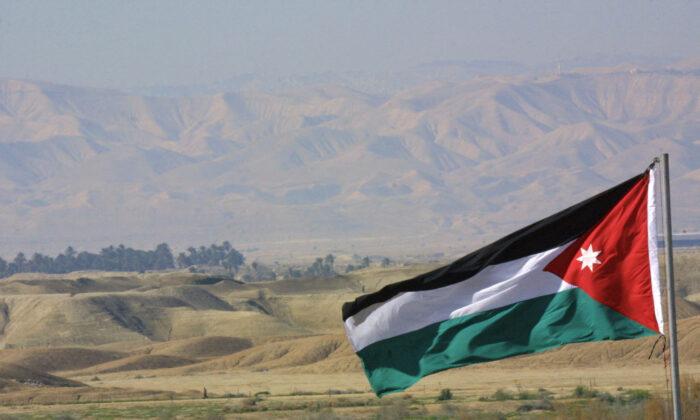Kyiv’s forces are still advancing—and taking prisoners—in Russia’s western Kursk region despite Russian counterattacks, Ukrainian President Volodymyr Zelenskyy said on Aug. 14.
“We continue to advance further in the Kursk region,” Zelenskyy wrote on Telegram on Aug. 14, “from one to two km in various areas since the start of the day. And more than 100 Russian prisoners of war in the same period.”
Russia’s western Kursk region, which borders northeastern Ukraine, remains the target of an ongoing ground offensive by Kyiv, now in its second week.
According to Zelenskyy, Ukrainian forces have established control over 74 border settlements since they entered the region—backed by tanks and artillery—on Aug. 6.
“Everything is being executed according to the plan,” top Ukraine commander Oleksandr Syrskyi said during an Aug. 13 video call—portions of which were televised—with Zelenskyy. The army commander didn’t elaborate.
In an Aug. 12 video message, Syrskyi said that Ukrainian forces had established control over roughly 386 square miles of territory in Kursk.
On the same day, Alexey Smirnov, Kursk’s acting governor, told Russian President Vladimir Putin that as many as 28 settlements in the region were in an area under Ukrainian control.
“Twenty-eight communities are right in that zone [controlled by Ukrainian forces],” Smirnov told Putin in a video call.
The fate of the area’s roughly 2,000 inhabitants, he added, is “unknown.”
In earlier statements, Russia’s defense ministry has acknowledged the presence of Ukrainian forces in areas of Kursk up to 17 miles from the border.
Since the cross-border offensive began, tens of thousands of Russian civilians have been evacuated from Kursk’s border areas and the neighboring Bryansk and Belgorod regions, according to Russian officials.
In the opening days of Kyiv’s offensive, Moscow said that its forces had foiled a Ukrainian bid to capture the town of Sudzha, a key transit hub for Russian natural gas. However, on Aug. 14, Apty Alaudinov, a top Russian Defense Ministry official, said that Ukraine had established a presence in Sudzha.
“Active fighting” was still underway in Sudzha, he said, although he disputed Kyiv’s claim that Ukrainian forces were “in control” of the town.
“They think that if 20 to 30 Ukrainian fighters have entered a locality, they can claim control of it,” Alaudinov said.
A Ukrainian news correspondent at the scene reported that Kyiv’s forces were now in total control of the town.
The video showed a column of burnt-out Russian vehicles at the entrance to Sudzha. It also showed empty streets with shops and official buildings undamaged.
As of publication time, Russian officials had yet to respond to the Ukrainian claims.
Meanwhile, Russia has continued to send fresh troops and equipment into Kursk, and for the past several days, Russian aircraft and artillery have attacked Ukrainian positions in the region.
According to Russia’s defense ministry, Ukraine has lost more than 2,000 troops, along with dozens of tanks and armored vehicles, since the offensive began. Russia’s defense ministry, like its Ukrainian counterpart, doesn’t provide figures for losses sustained by its own forces.
The Epoch Times couldn’t independently verify claims made by either side.

Reactions From Moscow, Washington
On Aug. 12, Putin met with top Russian officials, including the governors of the three affected regions, to discuss the ongoing crisis.At the meeting, which was held at Moscow’s Novo-Ogaryovo presidential complex, the Russian leader appeared to rule out negotiations with Kyiv—at least in the short term.
“It seems the opponent is aiming to strengthen their negotiating position for the future,” Putin said.
According to Russian figures, 12 civilians have been killed in Kursk—and scores more injured—since Kyiv’s cross-border offensive began.
Moscow also accuses Ukrainian forces of seeking to target Kursk’s nuclear power plant, which provides electricity to 19 regions in Russia.
The United States, meanwhile, has said it wasn’t told in advance about the offensive and has no involvement in the ongoing raid.
On Aug. 13, a Pentagon spokesman said Washington is “in contact with“ its Ukrainian counterparts ”to get additional details in terms of their objectives as it relates to their operation.”
“Our focus ... is supporting Ukraine and its ability to defend its sovereign territory and to take back sovereign territory within Ukraine,” he told reporters.
A spokesman for the State Department voiced similar sentiments.
“We were not engaged in any aspect or planning or preparation for this operation,” he said at an Aug. 13 news briefing. “We, of course, are supportive of efforts to disrupt [Russian] operations that might be immediately across the border.
“But beyond that, there has been no change in policy, and I will let our Ukrainian partners speak to any operation of theirs.”







